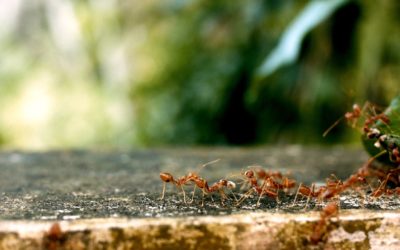Diatomaceous Earth Kills Bugs
How does diatomaceous earth kill bugs? With the help of its razor-sharp particles! The diatoms that make up diatomaceous earth have microscopic razor-sharp edges. Although not harmful to large, strong surfaces, these tiny razor blades are detrimental to ants, bed bugs, fleas and other crawling insects.
The sharp edges of the diatoms cut through the insect’s waxy outer layer during contact, allowing moisture to escape from the insect’s body. The absorptive capabilities of DE insecticides like Last Crawl then help to draw moisture from the insect’s body. By disrupting an insect’s delicate balance of water, it is unable to survive, resulting in death by desiccation.
An insects’ movement across the diatomaceous earth also contributes, by helping the sharp edges to lacerate the bug’s body. Essentially, when crawling insects come in contact with diatomaceous earth it is like walking across shards of broken glass.
A Physical Insecticide
As a physical insecticide, it is essential that the insect come in direct contact with the DE. This physical effect also means that ants, and other insects, cannot build up a tolerance to the insecticide, like they can with chemical-based products.
Microscopic Effects
Interestingly, while deadly to insects, diatomaceous earth feels soft to the human hand, with the effects of its sharp edges only experienced at a microscopic level.



